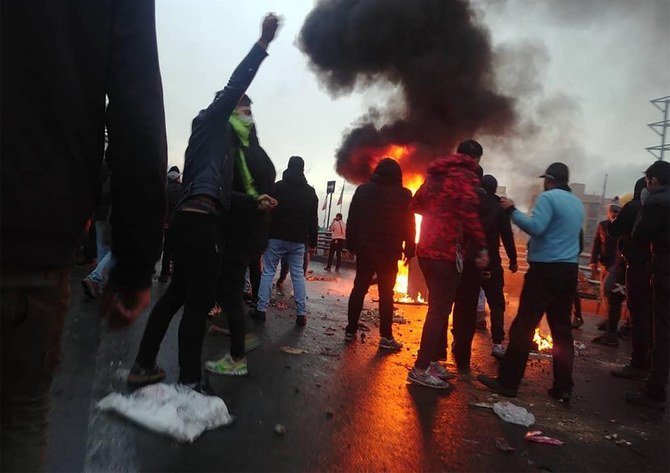
- ARAB NEWS
- 13 Jul 2025

This is the first anniversary of massive pro-democracy protests that swept Iran last year. The uprising was unprecedented in the past 40 years. It engulfed almost 200 cities and, in a matter of days, 1,500 people, including teenagers, were indiscriminately and deliberately murdered by security forces. Yet the massacre is one of the most underreported and overlooked events.
The West has fallen spectacularly short of its moral obligations. The regime must be held to account for the vicious November 2019 crackdown, otherwise it will most likely continue to massacre innocent Iranians who are suffering enough under a devastated economy and a major global pandemic. The 2019 uprising was extraordinary in many ways. It was a stunning display of popular rage toward the ruling theocrats.
For years, many Iran apologists in the West have argued that since the regime is firmly in power and enjoys a sufficient degree of support on the streets to allow it to survive, it should be appeased.
That argument was definitively buried in November 2019 when the overwhelming majority of Iranian people called for change.
The slogans were unprecedented, too. “Death to Khameini,” the regime’s supreme leader, and “Death to Rouhani,” the regime’s president, became rallying cries. The people expressed their hatred toward all the regime’s factions. They chanted: “Reformists, hard-liners, the game is now over.”
Popular rage manifested itself in another unprecedented development. Protesters targeted centers and facilities affiliated with the state and its armed forces. More than 1,890 regime-owned banks, offices of clerics, seminaries, Islamic Revolutionary Guard Corps (IRGC) bases, and other centers of plunder and suppression were targeted, damaged or torched.
The unbelievable pace of the spread of protests unmasked a society on edge, tired of the clerics, and yearning for a fundamental democratic transformation.
The regime, reeling under the weight of international sanctions, was caught by surprise. Khamenei called in the IRGC early on as the security forces lost control of the situation. The IRGC began to target protesters in the head or chest to kill on the spot and scare off the population. In the end, at least 1,500 people were gunned down.
Amnesty International discovered that dozens of teenagers were among the dead. Women and younger people played a leading role in the protests. That is partly why the uprising was so organized as demonstrators targeted the regime everywhere through slogans and action.
The outpouring of anger demonstrated in the clearest sense yet that the theocracy is on its last legs. It is weak, vulnerable, riddled with crises, and entirely illegitimate. It became even more illegitimate after killing 1,500 innocent people.
Iran is on edge and will rise up against the dictatorship again and again.
Dr. Majid Rafizadeh
That has left an enduring and painful scar on Iranian society’s psyche, immeasurably widening the divide between the people and the regime.
Many people abroad continue to support their cause. For example, more than 300 Iranian associations from 2,400 locations worldwide held an international virtual gathering honoring the 1,500 martyrs last week. They were inspired to have the leader of Iran’s primary opposition, the President-elect of the National Council of Resistance of Iran, Maryam Rajavi, supporting their calls for accountability.
The Iranian community urged the world to hold the regime and the massacre’s perpetrators to account for their crimes. They were joined by dozens of prominent US and European figures who addressed the event. Ambassador Mitchell Reiss, policy planning director in the George W. Bush administration, said: “This is a regime that fears Rajavi especially, and her 10-point plan to bring democracy, true representative government and the rule of law to Iran.”
Rajavi added that the uprising was a manifestation of Iranian people’s desire to overthrow “the religious dictatorship.”
They also urged Western governments to support the creation of a fact-finding mission to investigate the November 2019 crimes against humanity, send delegations to Iranian prisons to meet with detained protesters under torture, and refer the case to international courts for further action.
This shows that regardless of who becomes the US president, the Iranian people and their organized resistance movement are determined to continue the struggle to overthrow the regime.
The flames of November 2019 are alive and well. Just this week, the people of Ahvaz in southwest Iran rose up once again, this time in protest at lack of access to drinking water. They shut streets and highways, and fought with the regime’s forces.
Iran is on edge and will rise up against the dictatorship again and again. The world has a moral obligation to support the Iranian people in their struggle for democracy. And it has a legal duty to hold the ruling murderers to account for their heinous crimes.